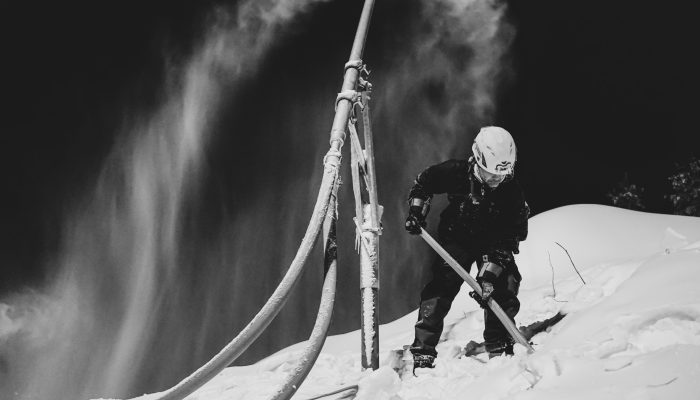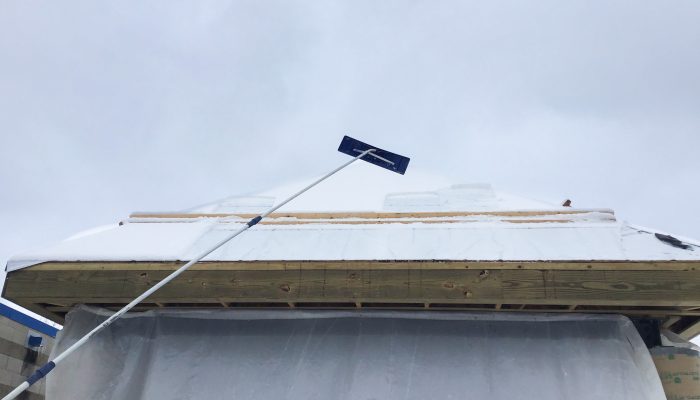Winter in Michigan is finally catching up to us, with temperatures dropping and snowflakes falling. Although we had a late start to the season, that means that some of the harshest weather may be quickly approaching. Winter has the shortest days of the year, with the winter solstice being the shortest overall providing 7 hours of daylight. This is also the day you would cast the longest shadow on the ground as Earth is tilted the farthest away from the sun! On top of having two-thirds of the day being dark, winter weather has strong effects on construction sites. Construction projects may come to a temporary halt, or contractors will take extra measures to improve efficiency and safety for their workers. If not, many things can go wrong, and fail further down the road due to poor execution and planning. Some of biggest effects on construction during winter are obvious, however, others build gradually and can go unnoticed.
The Ground is Frozen
When the ground freezes, it makes many different areas of a job hard. As the weather turns cold, the moisture in the ground becomes trapped and creates pockets of ice and air. Come spring, the ground begins to thaw, and these pockets open. This cause holes, uneven ground, and heavier sediment will begin to sink down into the ground. This makes excavation and grading more difficult as the ground can shift and move when the weather warms up. This means any building placed on frozen ground may also have to be replaced depending on how the ground decides to settle. If a contractor chooses to work through winter, choosing a subcontractor that understands the ground changing between seasons is crucial to the future of the project, even long after the project is complete.
Concrete Weakens
Along with frozen ground, pouring concrete is highly advised against in the winter. Concrete should be poured when the air temperature is above 40 degrees Fahrenheit, as it depends on its drying time to strengthen. When the air is below 40, or freezing, the concrete will freeze before drying. This can cause cracks, breaks, and the entire slab may have to be scrapped and replaced. Although there are thermal blankets to help it dry, the frozen ground still plays a factor as it keeps the concrete cold and could freeze it from the bottom up.
Non-Stick Adhesives
Adhesives, such as mortar and grout, also are negatively impacted by cold and freezing weather due to their water content. Finishing drywall can also be an issue as the joint compound/mud requires warmer temperatures to dry properly. If not, it can crack and cause gaps in the wall. However, interior renovations are easier to monitor during colder weather as you can have heaters in enclosed spaces, where as exterior work faces the weather head on. Unfortunately, the adhesive on exterior walls can cause cracks, gaps, and overall ruin the structural integrity and have to be fixed come spring unless covering is provided that can maintain the adequate drying process.
Ice
An obvious hazard is ice. Not only can ice be detrimental to a project, but also workers. Ice can slow or stop anything, from deliveries to operating equipment. When possible, job sites should salt sidewalks, walkways, and cover equipment such as ladders and scaffolding to prevent any job-related accidents. Icicles can also be a hazard on job sites, making the use of a hard hat imperative to the safety of all workers. When possible, icicles and snow on roofs should be removed prior to any work beginning to prevent accidents. High foot traffic can also cause snow to become ice in areas that wasn’t present at the start of the day, thus making awareness of your surroundings imperative during this season.

Staying Warm
Last but not least, staying warm during winter. While regular PPE is still required on site, extra clothing and coverage can restrict movement of hands, legs, and arms, thus creating a lack of control on equipment and work needing to be completed. Wearing too many layers could also cause heat stroke due to physical exertion with no air flow. However, not wearing enough layers can cause hypothermia due to the sweat on your skin not allowing your body to maintain warmth by freezing.
Protecting yourself during the winter is of utmost importance, especially on a work site that can be littered with new hazards from weather overnight. OSHA offers flyers that explain the best practices for keeping jobs sites safe during the cold and unpredictable winter months. For starters, they advise teams to spend the first part of the day prepping the site and addressing safety hazards. Cleaning off roofs of snow, icicles, and other hazards with long snow rakes from the ground. Using ladders or other climbing devices when cleaning should be avoided when possible as the surface may be slick, as well as the ground not being stable. Although the winter season has the shortest days of the year, taking your time at a job site to maintain safety is required as returning home safely is more important than completing a job on time to any contractor.

Share this Post

